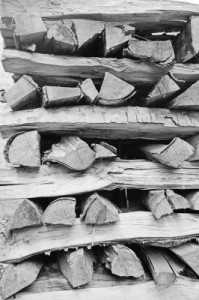The type of firewood burned determines how well a chimney system performs. Kiln dried and seasoned are two common types of firewood. Homeowners should learn about the differences between these so they understand how to get the most from their chimney systems. Soon, the fireplace will be aglow with burning logs that provide comforting heat.

Image courtesy of David Castillo Dominici / FreeDigitalPhotos.net
As its name implies, kiln dried firewood is wood that has been dried in a kiln. It is typically sold in small packages and designed for people requiring wood for only a few days, though it can be found in larger supplies. The kiln bakes the firewood, forcing out the moisture that is naturally present. It takes much less time to kiln dry wood than it does to naturally prepare it. Kiln dried wood is naturally seasoned, easy to use, and burns efficiently.
Traditional seasoning requires between six months and one year of storage before wood should be used. Otherwise, the wood is considered “green,” which refers to the fact that it was recently living. Due to its high moisture content, green wood will not burn well. It generates a huge amount of smoke and often causes the fire to sputter or spit.
Since green wood does not burn efficiently, its combustion produces byproducts that can clog chimneys and their spark arrestors. In addition, green wood compromises air quality. Wood must be allowed to fully dry so it can burn cleaner. To reduce the amount of moisture absorbed from the air, wood should be seasoned in a covered or enclosed space.
Whether people choose to burn kiln dried or traditional firewood depends on how quickly they need to use the wood. Firewood is typically sold by volume and heat production is based on weight. A cord of hardwood outweighs one of softwood by approximately two times but also contains nearly twice as much heat potential.
